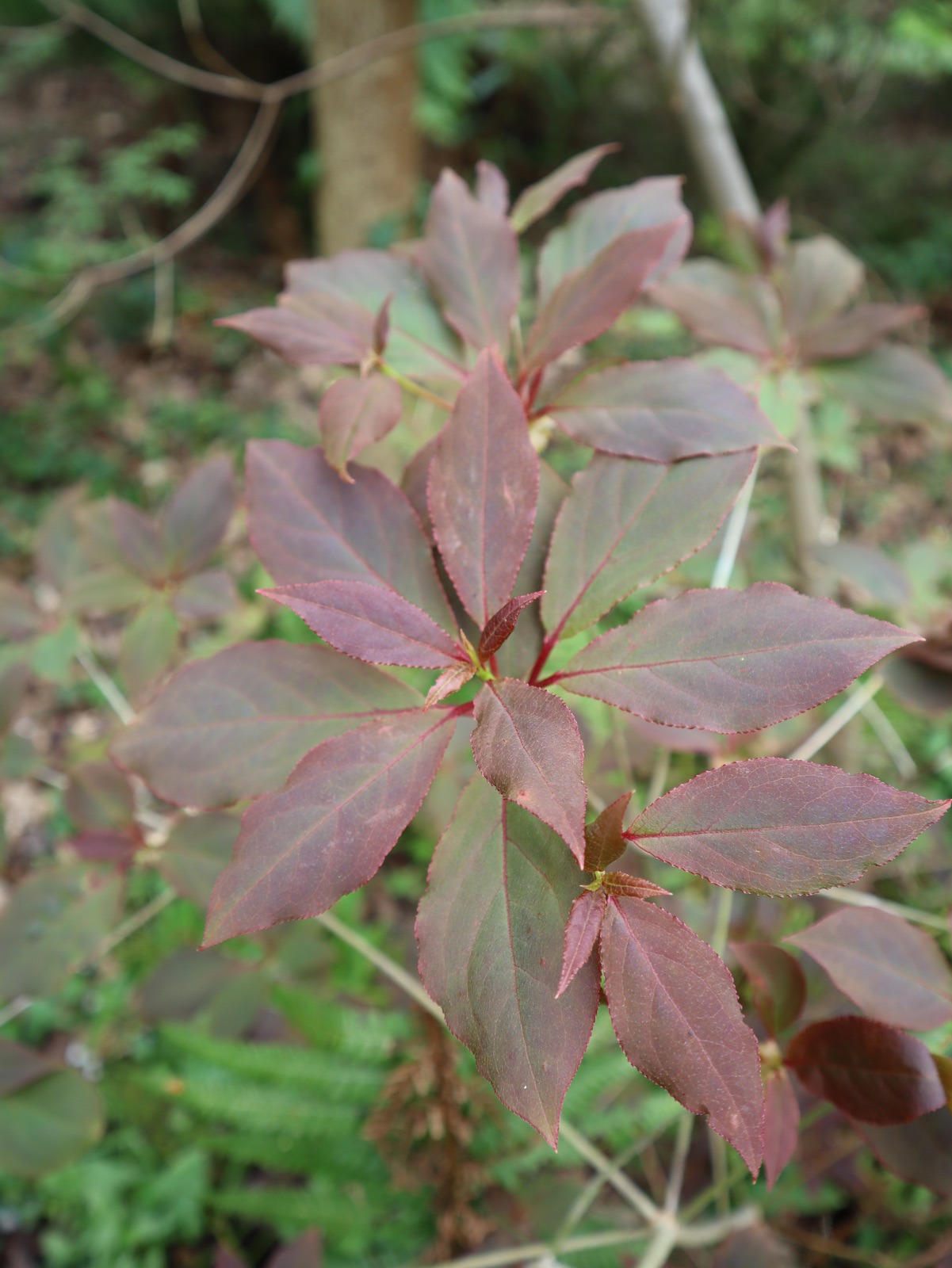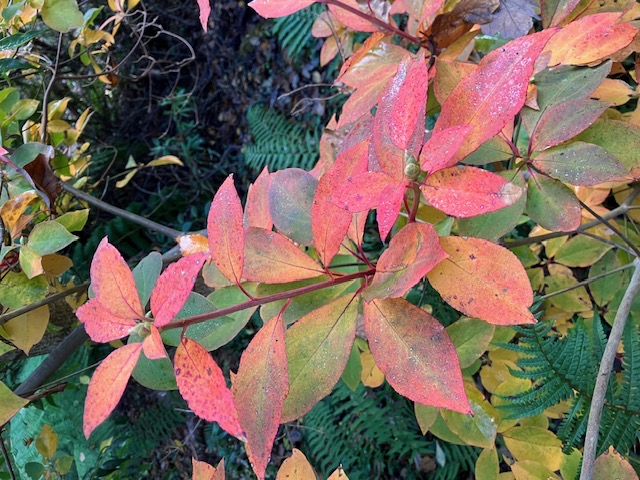Enkianthus ruber
Sponsor
Kindly sponsored by
Alasdair and Panny Laing
Credits
Tom Clark (2023)
Recommended citation
Clark, T. (2023), 'Enkianthus ruber' from the website Trees and Shrubs Online (treesandshrubsonline.
Genus
- Enkianthus
- Section Enkiantella
Shrub to 4 m tall. Young stems glabrous and reddish, soon covered with ashen colored bark. Leaves elliptic-lanceolate to elliptic-oval, abruptly attenuated at the base and decurrent on the petiole; acute and mucronate at the apex; margins abundantly and clearly toothed; coriaceous; glabrous both abaxially and adaxially; ruddy-brown on adaxial surface, red on abaxial surface; 3–3.5 × 1–2 cm; midrib prominent; 8–10 secondary veins slightly curved; veins and reticulations very visible on abaxial surface; veins impressed on adaxial surface; petiole 1–1.5 cm long, red and glabrous. Inflorescence; corymbs or umbels, shorter than the leaves; pedicels to 2 cm, red, puberulent, thin and drooping; flowers 7–8 mm long and wide. Calyx glabrous; sepals lanceolate-acute to 2 mm. Corolla campanulate with rounded lobes to 3 mm, not reflexed. Stamens 10, extending to one third the length of the corolla; filaments flattened, dilated to rounded, margins ciliate at the base, to 2.5 mm long; anthers with 2 setaceous horns to 2 mm. Ovary ovoid, glabrous; style glabrous. Fruit; oval to subglobose, to 4 mm long. (LeComte 1930).
Distribution China Hubei, Guangdong, Guangxi, Sichuan, Yunnan Vietnam
Habitat Subtropical mountain forests and dry hillside thickets. 1060 – 2180 m asl.
Conservation status Not evaluated (NE)
This species is apparently not currently in cultivation. Scant information exists about this taxon in its natural state as it is found in China or Vietnam save for Paul Louis Amans Dop’s (1876–1954) original description, translated above from volume 3 of Flore Générale de l’Indo-Chine in which it was described as a new species. The literature is virtually devoid of any information pertaining to this plant in a cultivated state.
A short survey of the flora and vegetation of Vietnam’s Lang Cung Mountains based on field work conducted in 2001–2002 references Enkianthus but does not refine this to the specific level. The study may be referencing E. ruber, E. quinqueflorus, or some other as yet to be described species. This mountainous region of northern Vietnam represents the southeastern extent of the Himalayas and exists along the border of Holarctic and Paleotropic realms and represents a very important area where numerous tropical, subtropical and temperate floristic connections converge (Averyanov et al. 2003). In short, it is a floristic treasure trove! The list of genera and species enumerated in this study provides a tantalizing glimpse of the botanical wealth that exists in this region.
Not surprisingly, considerable interest in and exploration of this area in recent years have yielded many plants that have been successfully established in gardens in the southeastern United States and parts of the Pacific Northwest and milder parts of the UK and Europe. Any species of Enkianthus, including E. ruber, introduced from this region would be worth experimenting with for horticultural purposes especially in light of climate change but also for purposes of conservation. E. ruber was assessed to be rare by the IUCN in 1997 (Walter & Gillett 1998) and continued deforestation, degradation and destruction of natural habitats are undoubtedly all conspiring to worsen the situation and to place immense pressure on the biodiversity of this area.



